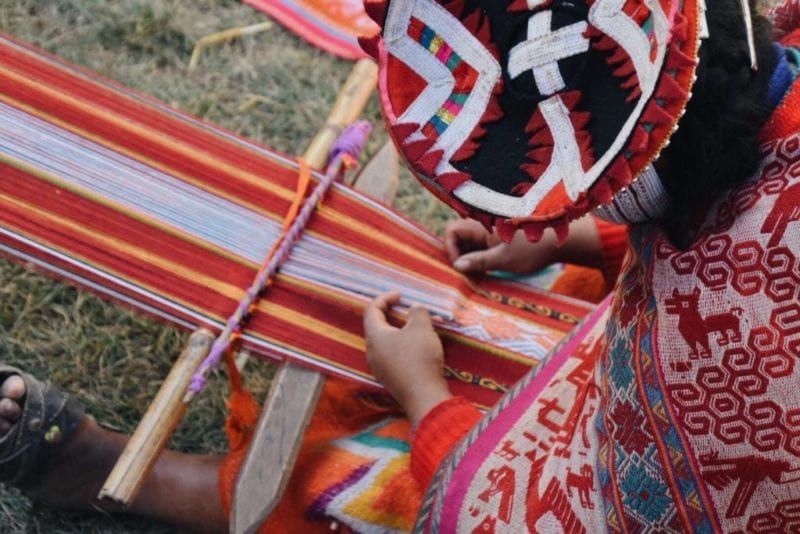Abby Hollis is a student at Savannah College of Art and Design. She crochets for class and does calculus for fun. In high school, she traveled to three countries with EF and still reminisces on the regular.
In a small, rural, Peruvian village, I witnessed raw material become finished product—quite a novel concept to the modern consumer. As my classmates and I passed around chunks of raw wool, fresh off the alpaca, women of the village stood before us gracefully spinning similar wool into yarn. When they asked for volunteers, I jumped at the opportunity, confident my lifelong crafting hobby had prepared me for this moment. Boy was I wrong. When I released the spindle, it immediately fell to the ground, breaking the wool. The artisan by my side giggled to herself, repaired the tear, and gave me another chance to no avail. My classmates had no greater success. In this moment it was apparent that the artistry had already begun and that we were severely under-qualified.

We sat back down and the demonstration continued. Dried and ground cochineal bugs were distributed into our palms, followed by a small amount of water. Our hands turned brilliant shades of red and purple. We circled around a pot of water and leaves, boiling gently over a fire. The artisans dipped their hand-spun yarn into the pot, and it emerged beautifully lime-colored. They went on to explain the many natural resources they use for dyeing, each producing its own unique color, made even more unique by the amount of time it would rest in the water. They then wrapped a set of threads carefully onto their self-made looms and wove additional yarn through them in the opposite direction to create the desired design. At the time, I had no idea how they created such beautifully elaborate designs from their minds, but I was mesmerized.
As I sat on the dusty ground, my hands stained with bug juice, I realized exactly what I wanted to do for the rest of my life: I wanted to change the textile industry. I’d had an interest in fashion for as long as I could remember, but I had never felt so passionately about my potential role within the industry. My interest quickly changed from finished product to process, from trends to thoughtful design, from fast fashion to sustainable and ethical production.

Although I had grown up traveling throughout the First World with itineraries jam-packed with “must-see” attractions, no experience had been so impactful as witnessing the slow, daily practices of these artisans. What the village lacked in modern luxuries and tourist sites, it more than made up for in artisanship and ingenuity. The experience was so impactful, in fact, that I returned the following summer for a ten-week internship at Awamaki, the non-profit organization which had organized the weaving demonstration. I was part of a small design team which collaborated with indigenous artisans in order to introduce their products to the global market and ensure that they receive fair pay for their work. With the ambition of translating the principles of local production, artisanal workmanship, and fair trade—which I learned in Peru—to my own work, I enrolled at Savannah College of Art and Design. I am currently pursuing a BFA in Fibers with a focus on fashion and a minor in Design for Sustainability. When I left home for Peru, a recent high school graduate, I had no idea that the next seven days would change the course of my life forever. I am nothing short of in love with my prospective field, and am so grateful for the trip and the artisans who introduced me to it.

